Jennifer Haddock, PharmD, remembers sweltering in her heavy protective gear under the hot sun as she worked her way down the line of cars snaking around orange cones in the Walmart parking lot in Albuquerque’s Northeast Heights.
Haddock and her pharmacist colleagues had answered the call to staff the drive-thru COVID-19 testing center, and now they were collecting nasal swabs from the drivers to send off to a lab. In the spring of 2020, the pandemic had swept around the world. There was no vaccine and no cure for the newly identified respiratory virus, and hospitals were full of critically ill patients, many of whom were dying while connected to ventilators.
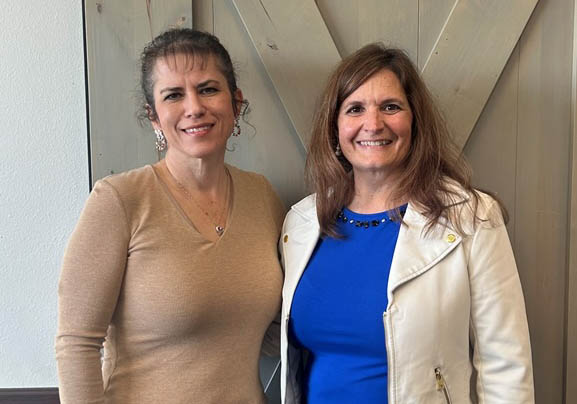 “What impressed me the most with the team is that at the time COVID-19 was something very unknown,” said Haddock, a 2002 graduate of The University of New Mexico College of Pharmacy. “It was scary. But so many of our pharmacists raised their hands, and our technicians raised their hands to say, ‘I will come help.’”
“What impressed me the most with the team is that at the time COVID-19 was something very unknown,” said Haddock, a 2002 graduate of The University of New Mexico College of Pharmacy. “It was scary. But so many of our pharmacists raised their hands, and our technicians raised their hands to say, ‘I will come help.’”
Haddock, director of health and wellness for Walmart’s Central New Mexico Region, was just one of many UNM College of Pharmacy alumni who stepped up during the early days of the pandemic, reflecting the College’s longstanding commitment to identifying and serving community health care needs.
The pandemic’s public health emergency prompted temporary authorizations for pharmacists to expand their scope of practice, and in 2024, New Mexico was among the first states to give pharmacists the authority to perform certain diagnostic tests, such as for flu, strep throat, and COVID-19, and then prescribe treatments based on the results. New Mexico pharmacists can also prescribe birth control, emergency contraception, tobacco cessation medicine and naloxone.
When Haddock was tasked with organizing the drive-thru COVID testing, one of those who raised their hands was Denise Gabaldon, PharmD, manager of the Walmart pharmacy at 400 Eubank Blvd. NE, in Albuquerque, and a fellow College of Pharmacy graduate.
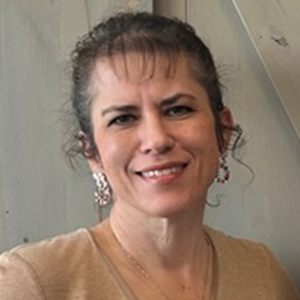
We’re often the first to be called for help. We answer the phones right away, and we're accessible. We have a lot of patients who don't have cars. They'll either take the bus or they'll walk here. It’s really imperative that these services get covered by insurance and become affordable for patients.
Haddock and Gabaldon are among a number of College of Pharmacy grads serving Albuquerque’s International District and adjoining communities at a time when many neighborhood pharmacies – and the big box retailers that house them – have closed. The result is a pharmacy desert, a place where it’s not easy to access health care and prescriptions.
In the face of these closures, however, many Albuquerque pharmacists with expanded prescriptive authority and a dedication to community health instilled by their experience at UNM’s College of Pharmacy are working hard to help meet community health care needs.
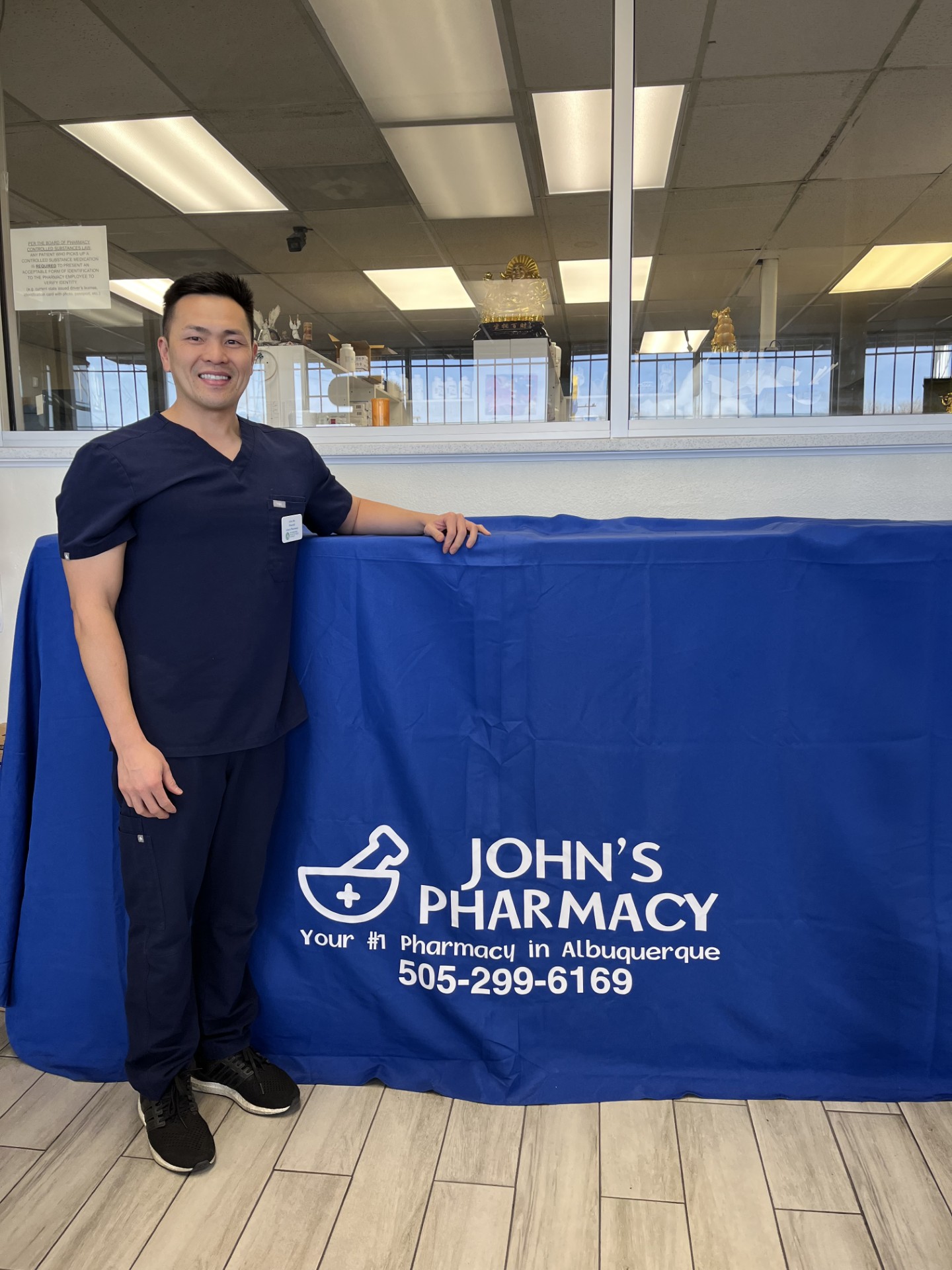 Among them is John Ma, PharmD, who graduated from the College of Pharmacy in 2014 with his brother Jimmy (followed by their brother Jeremy, in 2017). At the start of the pandemic, Ma had patients lined up at the door of John’s Pharmacy at 9134 Central Ave. SE – only one year after he decided to open his own business.
Among them is John Ma, PharmD, who graduated from the College of Pharmacy in 2014 with his brother Jimmy (followed by their brother Jeremy, in 2017). At the start of the pandemic, Ma had patients lined up at the door of John’s Pharmacy at 9134 Central Ave. SE – only one year after he decided to open his own business.
“COVID was a turning point for John’s Pharmacy,” Ma said. “When the vaccination program was rolled out, you had to do an online questionnaire. But the majority of my patients were the Vietnamese population, and they were older. They didn’t know how to use technology. We assisted every patient with that work – and it was well worth it.”
Ma said his family’s work ethic – his mother had two jobs as the family moved to New Mexico from California – and the College of Pharmacy’s focus on community health and outreach, inspire him. “We’ll always give back to community as much as we can,” he said. “That’s what we went to school for.”
Pharmacists who complete additional training to become clinical pharmacists work with providers in hospital and clinical settings to care for and treat patients as crucial members of the patient care team.
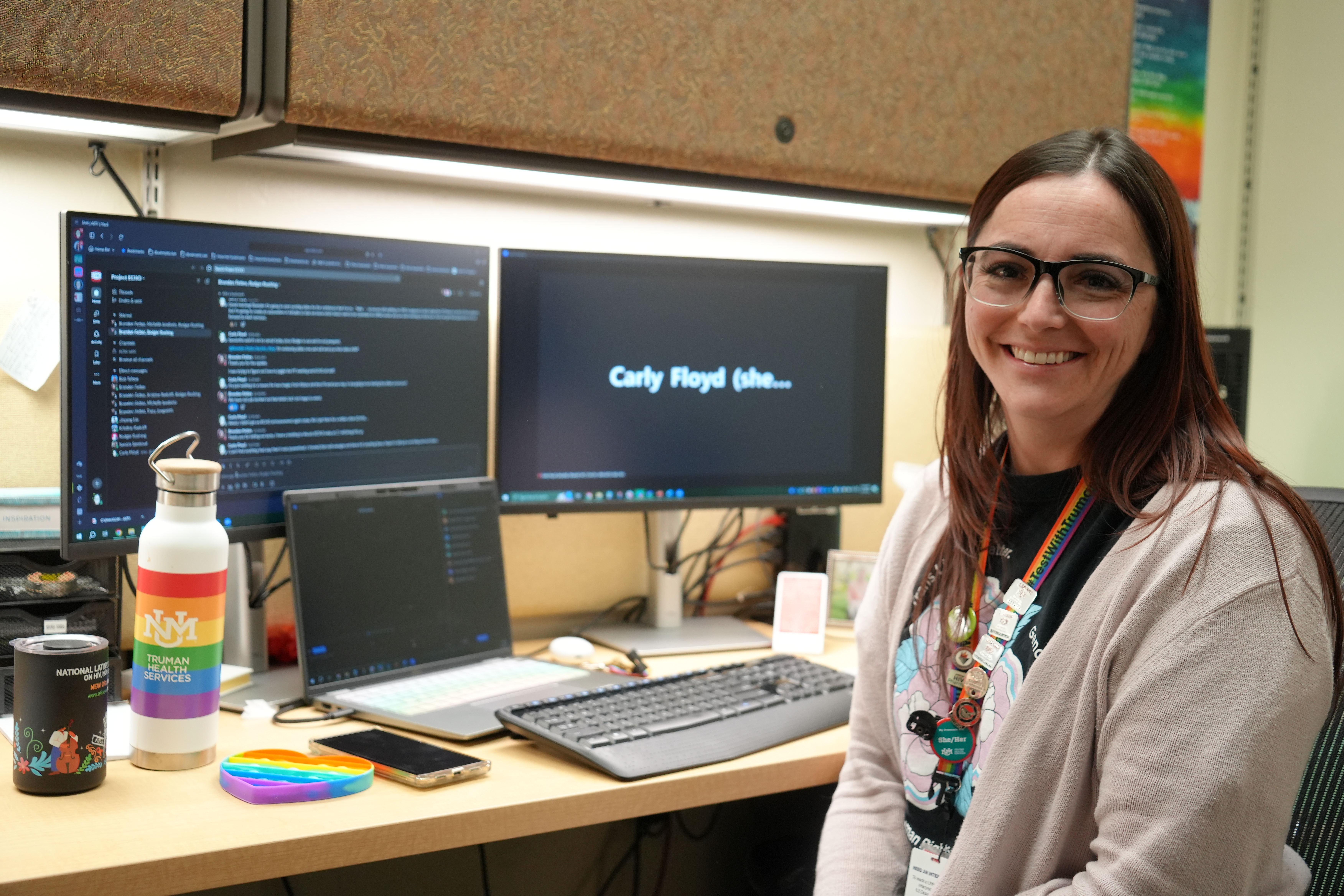 Carly Floyd, PharmD, PhC, ’09, a pharmacist clinician and assistant professor in the College of Pharmacy, provides HIV treatment and prevention, as well as chronic medical condition management for people with HIV. She is also a clinician on two interdisciplinary team-based clinics: one focused on care for young adults with HIV, and the other on people who are pregnant with HIV.
Carly Floyd, PharmD, PhC, ’09, a pharmacist clinician and assistant professor in the College of Pharmacy, provides HIV treatment and prevention, as well as chronic medical condition management for people with HIV. She is also a clinician on two interdisciplinary team-based clinics: one focused on care for young adults with HIV, and the other on people who are pregnant with HIV.
Although she enjoyed working in retail pharmacy early in her career, Floyd felt drawn to care for patients who lacked access to health care and had been made to feel that they had no right to it. It was during her residency in El Paso, Texas, that Floyd, who also speaks Spanish, found her calling with patients who had no or limited access to health care.
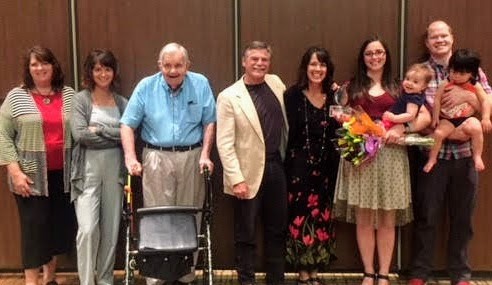
Floyd, who received the Distinguished Young Pharmacist Award in 2018 from the New Mexico Pharmacists Association, said she is a community pharmacist at heart.
“I want to spend more time just listening to the person in front of me,” she said. “I'm lucky. I get 30 minutes or an hour, and I get to hear their story. Why are they here? What's their life like? You're not just asking what their insurance or copay is going to be.”
Before Samir Gul Mohammad, ’20, a pharmacist at Smith’s Food and Drug in Albuquerque, learned the importance of medication to treat disease when his mother was diagnosed with ampullary carcinoma. As he cared for her, he kept track of drug interactions and acted as translator. That led to his decision to work on the retail side of pharmacy, where he could develop an ongoing relationship with patients.
“Some of my best memories from the College of Pharmacy are the labs where we would practice talking to patients,” he said. “I’ll get into a long conversation with a patient, which is of course about their health, but also what's going on in their lives. I feel like sometimes you're much more than a pharmacist.”
Most of his patients are on tight budgets, Mohammad said. “We have to fight for every single penny and try running discount cards to see what's going to be the best option for them. I have had patients where their total is 40 cents, and they say, ‘I don't have that.’ And I tell them, ‘OK, well, don't worry about it.”
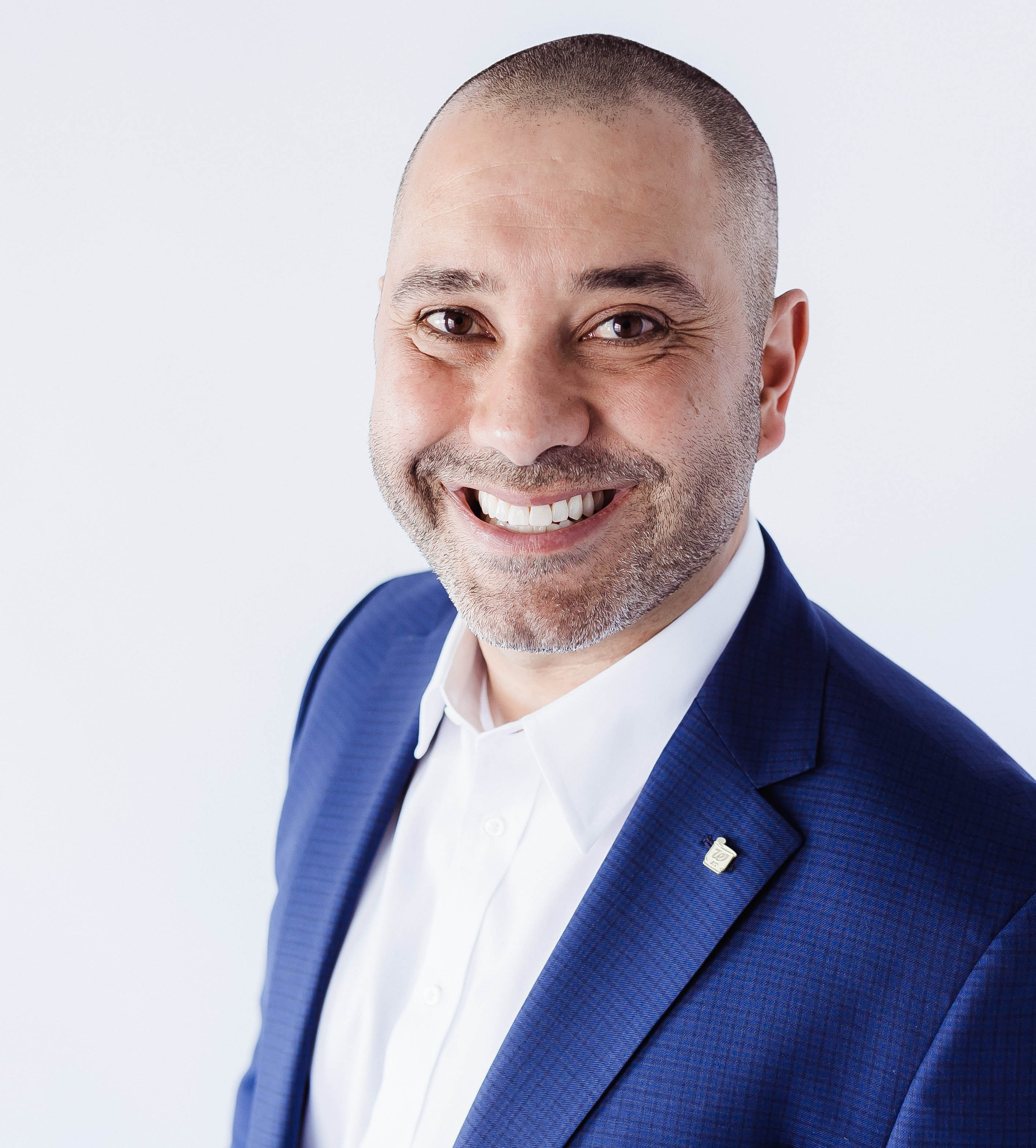 Jude Otero, PharmD, ’09, a Healthcare Supervisor for Walgreens in Albuquerque and Santa Fe, became interested in a pharmacy career when he shadowed his older sister in her job as a pharmacist at one of Lovelace Medical Center’s outpatient clinics.
Jude Otero, PharmD, ’09, a Healthcare Supervisor for Walgreens in Albuquerque and Santa Fe, became interested in a pharmacy career when he shadowed his older sister in her job as a pharmacist at one of Lovelace Medical Center’s outpatient clinics.
“I got to use my passion for chemistry, along with my interest in serving the community, specifically in the use of medication and improving health outcomes,” he said. “I paired that with having a more structured schedule, so that I could still have that harmony with my work-life situation and be a husband and a dad. Those things were important to me.”
After 15 years as a pharmacist, Otero said it’s rewarding to serve as a preceptor and share his experiences with College of Pharmacy students. “It’s really awesome to have conversations with the students and to help connect their passion for pharmacy with opportunities that are available and give them guidance.”
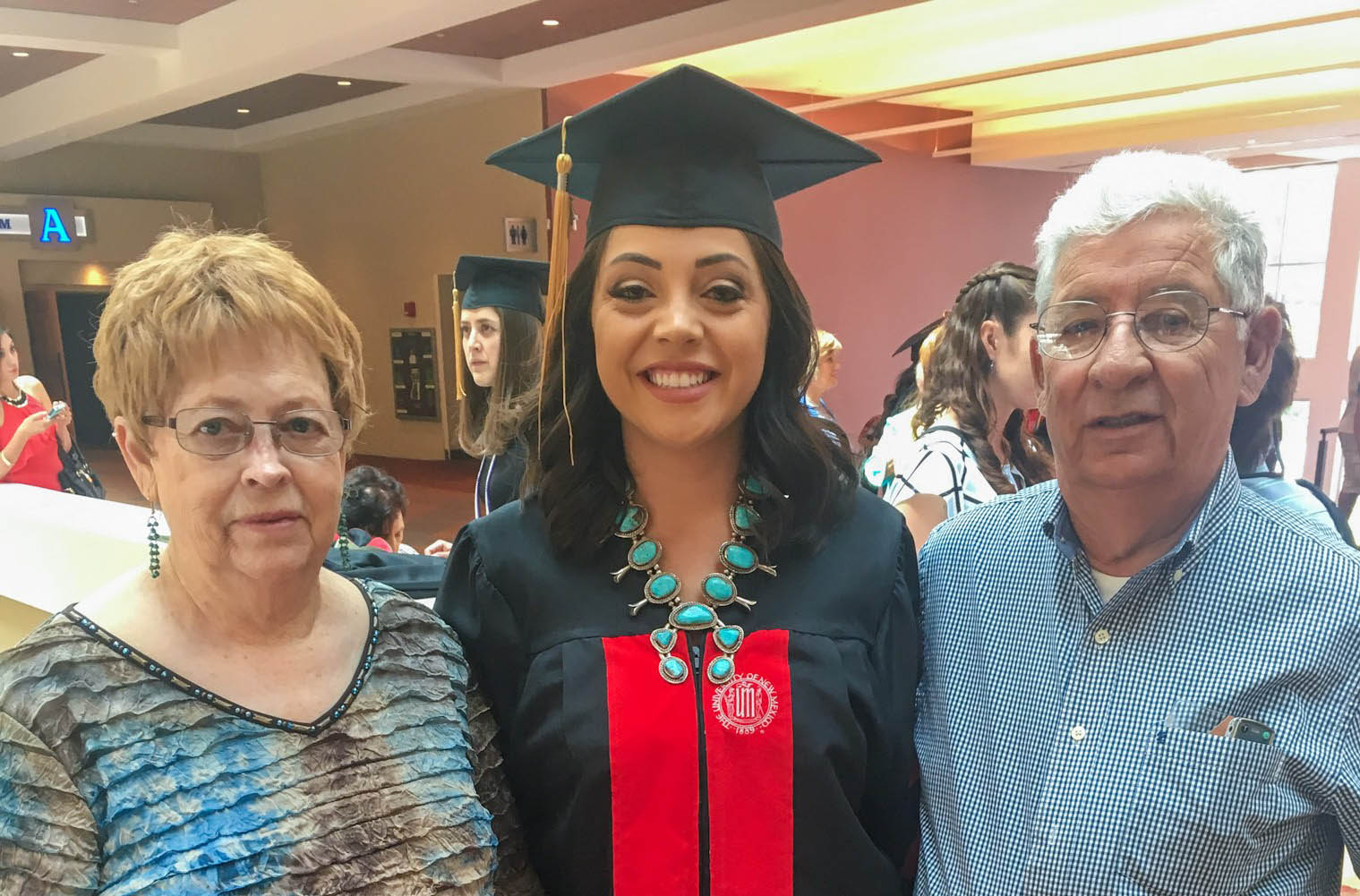 Alexandra Garcia, PharmD, ’16, grew up in a family of dedicated healthcare professionals in rural northern New Mexico, where access to care is often limited. Inspired by her grandfather, Mardoqueo's, mission to improve healthcare for underserved communities, Garcia developed a deep appreciation for the impact of strong patient-provider relationships.
Alexandra Garcia, PharmD, ’16, grew up in a family of dedicated healthcare professionals in rural northern New Mexico, where access to care is often limited. Inspired by her grandfather, Mardoqueo's, mission to improve healthcare for underserved communities, Garcia developed a deep appreciation for the impact of strong patient-provider relationships.
“Pharmacists are uniquely positioned to make a meaningful difference in patients’ lives,” said Garcia, executive director of the New Mexico Pharmacists Association. “While you might see your primary care provider a couple of times a year, your pharmacist is someone you interact with regularly, often monthly. Witnessing the trust and vulnerability patients bring to the pharmacy showed me how essential these connections are. That’s the kind of care and community I knew I wanted to be part of.”
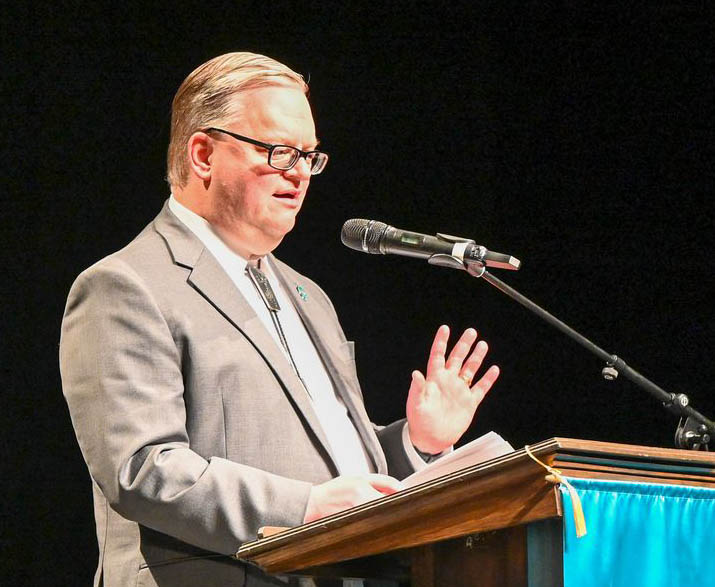 Donald Godwin, PhD, dean of the College of Pharmacy, points out that 81 percent of practicing pharmacists in New Mexico are UNM alumni, the highest percentage of any UNM Health Sciences program.
Donald Godwin, PhD, dean of the College of Pharmacy, points out that 81 percent of practicing pharmacists in New Mexico are UNM alumni, the highest percentage of any UNM Health Sciences program.
He also cites the growing prominence of the pharmacist, or pharmacist clinician, as a member of a patient’s health care team. This is especially important in New Mexico where there is a shortage of health care workers in the state’s rural areas.
“If I had my dream, I would have a pharmacist clinician – or several, depending on the size of the clinic – in every physician's office and in every ambulatory care center,” Godwin said. “The physician, the nurse practitioner, the physician assistant, they make the diagnosis. And then that patient is turned over to the pharmacist or the pharmacist clinician, and the pharmacist clinician then puts together the medication therapy for that patient.”
Meanwhile, just a short drive from the UNM campus, College of Pharmacy graduates work alongside one another to carry on the school’s mission of improving community access to health care.
“Albuquerque is a big little city,” said Walmart’s Jennifer Haddock. “We always seem to cross each other's paths. The College of Pharmacy fosters that, and then it follows us into the work world.”
